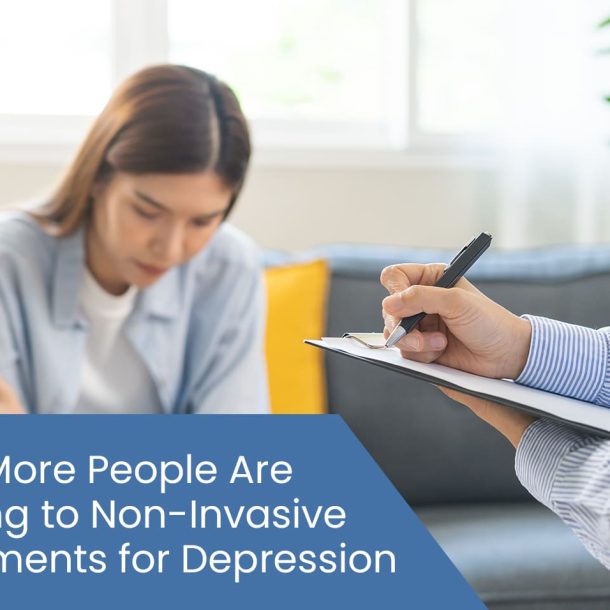
How to Find the Right Therapy for Brain Injuries
- Home /
- How to Find the Right Therapy for Brain Injuries

A traumatic brain injury rarely ends when the impact stops. What begins with a blow to the head, a violent jolt in an accident, or a sudden shift in direction can set off changes inside the skull, changes that aren’t always visible, but are almost always felt.
Often, focus slips, sleep gets lighter, and/or emotions show up uninvited or don’t show up at all. Simple tasks can become more difficult than they used to be, and conversations stretch longer. The brain, once steady and familiar, begins to feel like something entirely different.
This experience has become well-documented. This is because scientists all over the world have studied what many already sense, that even without bleeding or bruising, trauma can alter how different parts of the brain communicate. These effects may not be visible on a scan. Still, something shifts, and once it does, it can be hard to return to normal.
Recovery looks different for everyone. There’s no single pattern, and no guaranteed pace at which improvements will show. However, support is possible, and the right approach can make all the difference.
What is a traumatic brain injury (TBI)?
TBIs can be caused by blunt force, but that isn’t always necessary. Whiplash, falls, sudden deceleration, or blast waves can all lead to injury. Your brain can twist, swell, or move against the skull’s inner surface. As it moves, neurons stretch or shear, and electrical signals can get scrambled.
The result is a wide range of symptoms, including headaches and dizziness, as well as memory loss, personality changes, and emotional outbursts. Some people recover quickly; others don’t. Additionally, in many cases, what works for one patient doesn’t work for another. They’ll probably be quite different, which is why individualized care matters a lot.
Symptoms That Shouldn’t Be Ignored
Fatigue that never resolves; apathy that replaces motivation; or sudden anxiety in places that used to feel safe: these are real, and they are common in post-TBI recovery. Confusion, vision issues, mood swings, and cognitive delays can linger for months or even years after the event.
People might tell you that it’s all in your head. Ironically, they’re right—it is. However, that doesn’t mean it’s imaginary; it means it’s neurological.
Standard medical evaluations begin with a physical and neurological exam. Imaging tools like CT or MRI scans help rule out major trauma, including bleeding or swelling. Yet, many cases of functional brain disruption don’t show up on these scans. The damage is subtle, electrical, and persistent.
Why Standard Therapy Isn’t Always Enough
Traditional brain injury therapy provides an essential foundation for TBI recovery. Physical, occupational, cognitive, and speech therapies are all critical components. These disciplines help people relearn skills, adapt to limitations, and restore function.
Physical therapy improves strength, coordination, and endurance. Occupational therapy focuses on daily living. Cognitive therapy trains memory and attention. Speech therapy assists with communication and swallowing. Psychological support allows patients to navigate the emotional landscape of recovery.
This entire system plays a vital role. However, for some individuals, these therapies plateau in terms of the benefits they offer. They help, but something still feels blocked for some. The brain doesn’t fully re-engage. Recovery slows, and symptoms stay.
Therefore, there’s a great need for improved therapeutic strategies that dig deeper into the brain’s circuitry and help restore balance at the level of neural function.
What is MeRT?
Magnetic e-Resonance Therapy (MeRT) is a personalized, non-invasive treatment that targets dysregulated brainwave patterns using a form of neuromodulation. In simple terms, we first listen to your brain. Afterwards, we help it return to a more optimal state.
It all begins with a quantitative EEG (qEEG [quantitative electroencephalogram]), a scan that maps electrical activity across your brain. From this data, we identify areas that are out of sync. Next, tailored magnetic pulses are gently applied to guide those regions towards healthier patterns of neural firing.
Why It Works Differently
Unlike traditional TMS (transcranial magnetic stimulation) or medication-based treatments, MeRT is guided entirely by your brain’s own signals. No two protocols are the same. You’re not being treated like a case file. Rather, you’re being seen as your own person with your own unique brainwave patterns.
MeRT doesn’t override who you are; it doesn’t flood your system with chemicals. Instead, it delivers gentle pulses to targeted areas on the scalp to help your brain reconnect with parts of itself that have lost their rhythm.
Imagine an orchestra in which one section has drifted off tempo. The music continues, but it doesn’t sound quite right. The conductor, in this case, MeRT, doesn’t change the music; it simply brings the players back in sync.
What Patients Often Notice
Improvements can emerge gradually. Sleep becomes deeper, thoughts arrive more clearly, emotional regulation returns, and headaches slowly vanish. For many, the fog lifts. It isn’t about “fixing” the brain, but about supporting it while it heals.
These shifts are usually described as subtle during the first two weeks. Then, they become more prominent and stable. That stability is what sets MeRT apart. The goal isn’t a temporary fix, but rather a new foundation.
What if healing isn’t about trying harder, but about tuning differently?
What to Expect at Neurosync Brain Centre
Your care starts with a conversation. We ask about your TBI and health history, symptoms, and goals. We perform a qEEG and analyze the results. From there, a treatment protocol is built specifically for you.
Sessions are safe, comfortable, and non-invasive. You’ll attend five times a week, and as your brain responds, the protocol is adjusted in real-time. It’s a dynamic process, informed by your own progress. At every step, your experience leads the way.
Why Brain Injury Therapy Might Be Right for You
MeRT isn’t designed to replace standard therapy; rather, it adds a new dimension. Many of our patients come to us after months or years of conventional treatment. They’ve worked hard, tried medication, and have attempted all types of talk therapy. Yet, something still feels out of sync.
Having tried everything else, they decide to try something different. And slowly, gently, real change begins. This path might be yours as well.
Who can benefit?
TBI isn’t always visible, but it’s always real. If you’ve been told that your scans look fine, but you feel far from fine, MeRT may help. If medications left you numb or talk therapy hit a wall, this could be the step that unlocks progress. Your recovery doesn’t need to mirror anyone else’s; it just needs to be yours.
A Message From the Neurosync Brain Centre Team
At Neurosync Brain Centre, neurological rehabilitation is grounded in respect for your unique experience, symptoms, and potential. No two recoveries follow the same arc. That’s why we don’t offer cookie-cutter solutions.
Instead, we start where it matters most: your brain. What happens when we actually listen to it? We begin to heal. Your next step isn’t about committing to a treatment plan for brain injury therapy. It’s about exploring whether that treatment aligns with your needs.
Call us at 365-799-8438, email neurosyncbtc@outlook.com, or complete our online intake form to get started. You’ll receive a thoughtful, data-informed, and person-first approach to care. There’s nothing generic about what we do because there’s nothing generic about you. Your brain is not broken. Let us help it get back in sync.
Working Hours
Email: neurosyncbtc@outlook.com
Woodbridge. ON. L4L 1A6

